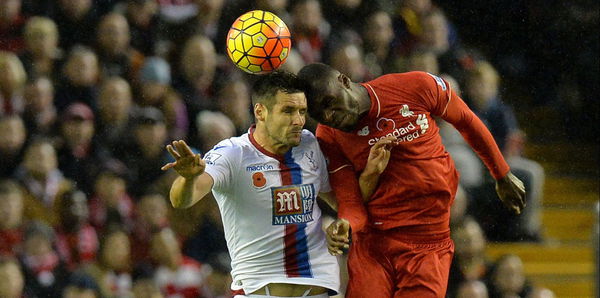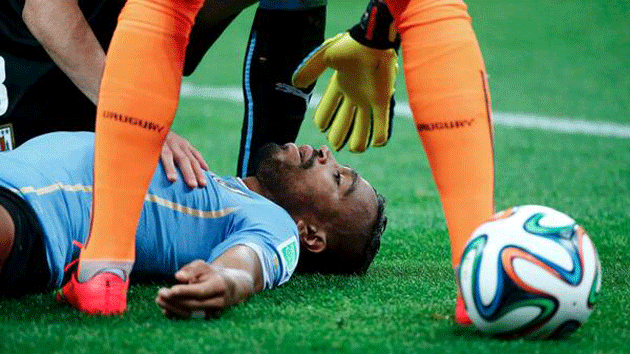

- Standard football headers result in immediate and measurable alterations in brain function.
- Changes in short and long term memory function and corticomotor inhibition are detectable immediately after soccer heading.
- Head injuries account for between 4% and 22% of all soccer injuries.

via Imago
Heading a ball can leave footballers with brain abnormalities and memory loss, a study has found. Players most fond of the “header” suffer changes similar to those seen in patients with traumatic brain injury, scans have revealed. ? ? ? ? ? ? ? ? ? ? ? Photo credit : Scott Wilson/PA Wire URN:16774893
Played by more than 250 million people worldwide, the ?beautiful game? often involves intentional and repeated use of football headers. This common move on the playing field can have serious, long-term effects on the brain.?The consequences of skull meeting ball have become the subject of intense research over the last decade. Although the thump of a soccer ball on a forehead seems fairly harmless, a soccer player may “head” the ball hundreds or even thousands of times during the course of the season. Heading is frequently cited as a risk to brain health. But, little data exists regarding the consequences of this activity.
ADVERTISEMENT
Article continues below this ad
THE DAMAGE INFLICTED BY FOOTBALL HEADERS
Concussions
A concussion may occur when someone’s head strikes an object. A person with a concussion may lose consciousness or suffer memory loss and appear confused.?Concussions account for as many as 8.6 percent of injuries in soccer, according to a study by Dr. Tom Schweizer, director of the neuroscience research program at St. Michael’s Hospital in Toronto. On-field collisions can be the cause? of some of these concussions. Others come from heading deliberately using your head to control the ball.
Brain Damage
A?Norwegian study?found that 35% of 69 Division I soccer players had abnormal electroencephalogram (EEG) patterns. This is more than twice the rate of abnormal EEG patterns in control subjects. Retired soccer players had?several brain abnormalities, including reduced cortical tissue and increased lateral ventricle size.
Neuropsychological Effects
Soccer players also seem to?perform more poorly?than control subjects on some types of IQ tests and many former players (81%)?suffer from problems with attention, concentration, and memory.
Research Finds Damage

via Imago
Researchers are trying to determine if heading the ball can be linked to chronic traumatic encephalopathy, a degenerative brain condition.
Photo Credits :?FEREX/AP
Researchers from the University of Stirling have explored the?true impact of football headers, identifying small but significant changes in brain function.
ADVERTISEMENT
Article continues below this ad
The?research, published in EBioMedicine, studied brain changes among amateur players, aged 19 to 25, who headed machine-projected soccer balls at speeds modeling a typical practice. The results were temporary but questions about possible cumulative damage done over time, arise.
The researchers found that immediately following these sessions, subjects’ error scores on both short and long-term memory tests were significantly higher than subjects’ baseline performances.
ADVERTISEMENT
Article continues below this ad
Cognitive neuroscientist Dr Magdalena Ietswaart from Psychology at the University of Stirling said, ?In light of growing concern about the effects of contact sport on brain health, we wanted to see if our brain reacts instantly to heading a football. Using a drill most amateur and professional teams would be familiar with, we found there was in fact increased inhibition in the brain immediately after heading and that performance on memory tests was reduced significantly.”
ADVERTISEMENT
ADVERTISEMENT
ADVERTISEMENT
ADVERTISEMENT

